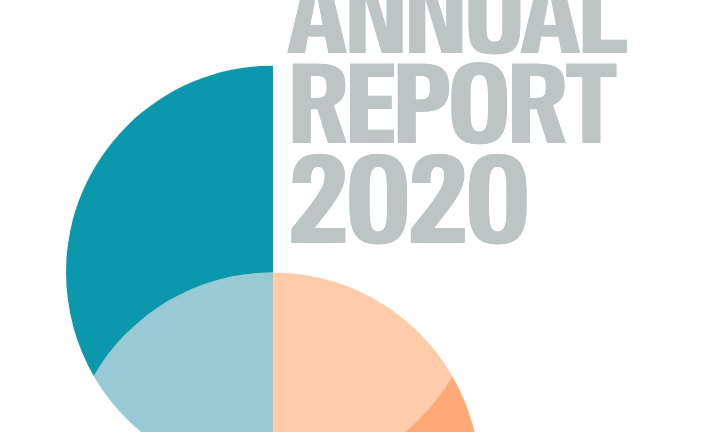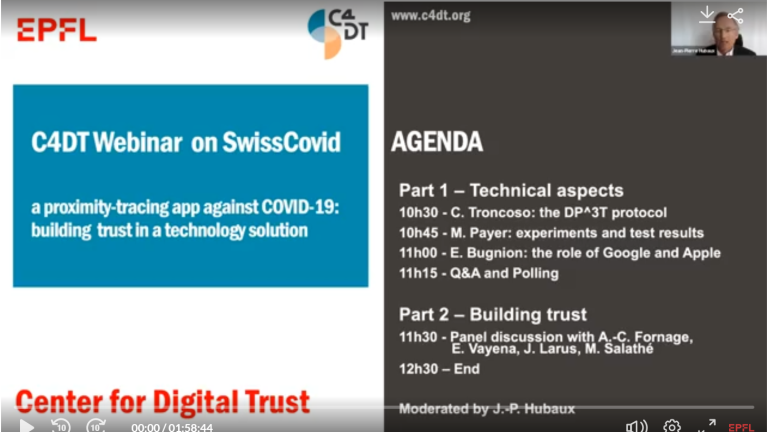Publications
Should we trust digital immunity passports?
Why Blockchain is Not Yet Working – 2021
This Monday I presented the following article. It discusses blockchains shortcomings. Even if it has been written in 2018, it is still very up-to-date… What follows here is a very opinionated piece. As such it reflects the journey I did in blockchains over the past 6 years. And I’m sure…
immutable.js, concurrent-safe data structures
Concurrent programming is one the oldest and hardest issues in the Computer Science Book. For years, we have been using locks, big threads sharing the minimum, using optimistic reasoning for “how data will be updated”. And we are still stuck with the same issues of some part of the code…
Zoom it out
We’ve been looking at the very nice https://gather.town and played around with it. Instead of having a fixed view of all participants, you can walk around and ‘meet’ different persons in gather.town. You can edit the space your liking. It looks very much like a very old-school Zelda: What I…
Ansible: powerful automation made easy
The management of IT infrastructure is a constantly evolving topic. A very interesting concept that emerged in the last decades is the idea of infrastructure as code: instead of configuring servers in an artisanal fashion, the process is formalized into definition files, which are then automatically “executed”. There are multiple…
Prettier, a uncompromising code formatter
Code formatting is the most known instance of bikeshedding: everyone has a different opinion on it and nobody is willing to compromise. Do you remember the hours-long discussions on using tabs versus spaces? Where to add empty lines? Alignment of fields? For some years now, many languages provide their own…

2020 Annual Report – C4DT
Go compiler optimizations for structs
This article looks into the optimizations of the golang compiler with regard to different usage of structs. It answers the following questions: Does it avoid unnecessary structure copies? Does it inline where necessary? To answer theses questions, I wrote a small example and decompiled it to see how well it…
Failing OmniLedger login
Connection Failures There are some common reasons why the OmniLedger login can fail. So far we have seen the following ones: Corporate firewalls Private browser settings If you have a corporate firewall that blocks access to non-standard ports, the only thing you can do is to remove the VPN. This…
Maturity Evaluations
The C4DT/Factory works to bring EPFL’s great ideas to our partners. We do so by working on the existing code created in the labs. Because most of the code written in the labs has the goal to create graphs in a paper, it is not directly usable in another project.…
Data 2025 v.2.0
TLDR for “Managing Technical Quality”
Some notes from https://lethain.com/managing-technical-quality/ – most of the comments are copy/pasted, so ‘I’ is the author… In italic some more C4DT-specific notes. Technical quality is a long-term game. There’s no such thing as winning, only learning and earning the chance to keep playing. Do the quick stuff first! Hot Spots…
Manipulating elections in cyberspace: are democracies in danger?
Recover data on ByzCoin
How to get data back on ByzCoin OK, now it happened – I lost my addressbook on ByzCoin. As we’re using the Partner-login internally, I have a list of all accounts I created on the blockchain. Currently it’s not encrypted using Calypso yet, work in progress. So my account on…
Coding Guidelines @ EPFL
There are a variety of coding guidelines at EPFL. Some focus on a lab’s preferred language and their specific tools, some are more on project handling and general git usage. Most are a mix of the above. Sadly, theses guidelines aren’t scrupulously followed, aren’t usually automatically checked and some are…
Matrix on Mobile with OmniLedger login
For some time it was impossible to use the c4dt matrix chat on the mobile phones, as RiotX didn’t work correctly with the OmniLedger login. Now you can use the Element app together with our login to have matrix chat on your phone. TL;DR Of course you just want to…
Critical infrastructures in Switzerland: are they crisis-resilient?

SwissCovid (DP^3T project) – a proximity-tracing app against COVID-19: building trust in a technology solution
Exploring golang with a REPL
It is customary for users familiar with a command-line shell or dynamic languages such as Python to work with a REPL, or Read-Eval-Print-Loop. This kind of interface is very powerful for common exploratory tasks: quickly interact with some data or object, prototype an idea, or learn a particular functionality or…
golang code analysis
To ensure good code quality, we are looking this week at some golang (one of the language used for many of our project at C4DT) helping us to do so. Some idea where taken from the Awesome Go List, a good reference for everything related to golang. First, we show…
Crypto in Angular and Nativescript
Using typescript and npm has two big advantages: there are many modules available, and it runs in many environments. Unfortunately this is also one of the biggest challenges. Because you can configure every aspect of the system, you can break it very easily. At C4DT we often use the crypto…
Kubernetes
Want to automate pretty much every aspect of a deployed application lifespan? Having issue with reliability using docker-compose? Doesn’t want to care/handle how to expose this application to the outside? Want to have a reproducible infrastructure of containers deployed in a fast and resilient manner? Then Kubernetes is for you.…
traefik: a powerful reverse proxy
In a systems infrastructure, it is common that a single physical hosts presents many different services to the world. For example, one can have https://app1.my.domain/ and https://app2.my.domain/ point to the same host, whereas the actual services inside the organization reside on different physical or virtual machines. A typical way to…
On the road to general quantum computers
From an engineering point of view, quantum computers are very interesting beasts. It’s something new, shiny, you don’t understand it, but it seems to be the future. So you must go there! This is a collection of links that I found very helpful in understanding how quantum computers work and…